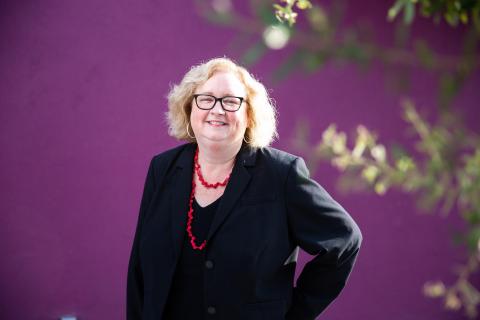A note from the editor
On health humanities
If there was ever a moment in which we as an English department were more poised to reflect on the essential cultural work we do as scholars, teachers, writers and learners, this time is it. The disruptions to social systems and everyday ways of living resulting from the Covid-19 pandemic, as well as the ways the past year has revealed the inequalities and threats to health (and human life) embedded in cultural and political structures and social systems, have made the humanities work we do more urgent and more visible. This is especially true for areas of academic work where the humanities intersect with the health professions, environmental and sustainability studies, the law, and critical studies in areas of race and ethnicity, class, gender and sexuality. The theme for our newsletter this year—on health and wholeness—reflects this growing awareness and visibility, and it celebrates the ways our community has worked to address cultural needs and challenges during this pandemic year.
As we’ve seen throughout the year, human health depends on stories. In a visit to a clinic, for instance, patient stories are a diagnostician’s first and best tool for understanding disease; when the doctor asks for the story of what brings the patient to them, the health intervention can begin. Before that interaction even takes place, however, stories (and histories) that reinforce unjust social systems, stigmas, or stereotypes are often the underlying causes for illness, suffering and death. They are also the pathways to support, care, and resilience, as we’ve seen that scientific breakthroughs like vaccines must depend on well-told stories to save lives and alleviate suffering. In this fundamental way, bodies are hurt or healed by the stories that circulate around and through them. The health humanities privileges and investigates this intersection between the body and its stories.
For those who may not know about this growing academic subfield, the health humanities is an interdisciplinary area that brings together those who work on questions of health from various humanities methodologies and disciplines—including bioethics, history of medicine, disability studies, and narrative medicine. Narrative medicine, in particular, is an area of research and training focused on how literature and other kinds of stories define health, as well as how healthcare professionals must be trained to hear and respond to the narrative complexity of their patients’ stories and the structural complexity of their lives. Deeply committed to questions of health access and equity, those who work in this field are opening new ways to promote health and wellbeing.
There is mounting evidence and growing interest in the fact that health is indeed influenced as much by social, environmental, and cultural factors as it is by biology or biotechnology.
Although in the modern university the humanities—and particularly academic areas that study narrative, representation, culture and language—were cut off from the biological sciences and medicine, there is mounting evidence and growing interest in the fact that health is indeed influenced as much by social, environmental, and cultural factors as it is by biology or biotechnology. There have been increasing calls from those who work in biomedicine for creative cultural approaches to health that can work in synchronicity with the biological and social sciences to improve health and wellbeing for all.
In the Department of English, we know how vital stories are to human flourishing. Whatever new beginnings emerge from the pandemic, those of us who work in English will offer ways to read, understand, and write the stories about health we need after the pandemic. We want this newsletter—as a record of our community—to celebrate this work (and all of the work we do) and those who do it, and also to bear witness to the losses and challenges that our department and our wider communities have suffered this year. Very few of us will look back with yearning or nostalgia for more Zoom classes, meetings, and virtual happy hours, but we hope we will remember the achievements celebrated this year despite its challenges, the lovely virtual moments of connection (especially the tributes to three of our colleagues who are retiring from careers dedicated to the department at their memorable Zoom retirement party!) and the arrival of terrific new faculty and staff, who made the transition to being our colleagues and brought their talents to us so generously even with almost nobody in the building.
Here’s to the next year and to the time coming when we can be safely together!
Image of Cora Fox credit Deanna Dent/ASU.

